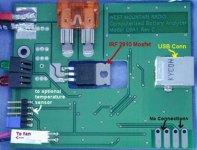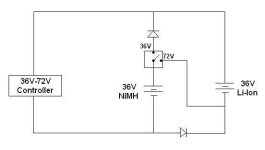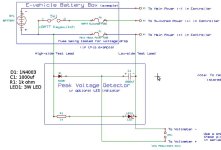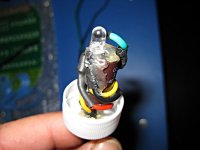Doctorbass said:
I have it too and i tried to mod it to avoid the worst voltage reading dur to voltage loss in the wire...to see if i could add some current sensing wire to sens the voltage data directly thru auxilliary wire instead of the wire that circulate the discharge current
.. but it is nearly impossible due to the circuit desing...
there was many article on how to repair or prevent dammage of this analyzer on RCgroup forum..
This is a great unit but the voltage reading is poor!! and also it does not take account of the connections loss...!!
I've wrote to the designer of west mountain radio to see if he will make a newer version of it .. but it may take sometime..
Doc
I'm thinking like you on this, Doc! I don't have a CBA like this, but after seeing the results that RLT posted in the headway thread I came to the conclusion that the device was measuring an extra 7 milli-ohms or so in his test setup. This error shows up the most when only one cell is being tested (low V output), and when high currents are being tested. This also makes us think that the cell has less capacity than it really has, because the voltage measured is used to calculate watt-hours (Wh = V * Ah).
Like you suggest, it would be great if we could have two seperate voltage sense wires that would be connected directly to the cell/batt under test, thus avoiding any added voltage drop produced by any resistance present in the CBA's output and in the external wires and connections to the cell/batt.
You say that
...it is nearly impossible due to the circuit desing...
to compensate for the extra resistance. Is this because of grounding issues in the voltage sense circuit going into the micro-controller? They don't use a differential amplifier I'm guessing?
OK, so to get around this to a certain extent it would be quite simple: Just ask the CBA company to add a software selectable compensation for this error! A user could then just select the equivalent resistance they have in their particular test setup - like about 7 mohms for RLT's tests here. The CBA's micro then just has to calculate the voltage drop produced by this added resistance (V drop = R ext * I test), and add it back onto the measured value... et voilà!

While they're at it, the CBA company might want to use this voltage compensation for the voltage cutoff setting too, since this same problem makes the cutoff voltage get activated too early, making it look like an even larger loss of watt-hours in your cell/battery! :?






